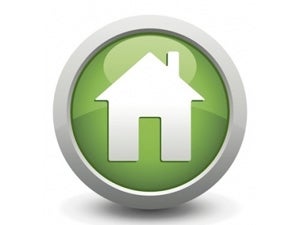Empowering Pennsylvanians through Increased Energy Data Access

Data may be the most promising and powerful tool to advance energy efficiency, but we’ve barely begun to scratch the surface of its potential. Fortunately, more and more customers across the country are obtaining access to information on their electricity usage and pricing data, and Pennsylvania may be one step closer to harnessing this resource.
EDF and Mission:data – a national coalition of technology companies that advance the use of energy data – recently encouraged the Pennsylvania Public Utility Commission (PUC) to empower customers with data in an electronic form. Specifically, we are proposing the PUC adopt the Open Data Access Framework, which clarifies the type of electricity usage data all Pennsylvania customers and authorized third-parties have access to and how the data should be provided. Based on widely-adopted national standards, the Framework can help Pennsylvania effectively utilize and get the most out of its energy data.
Data, technology, and potential savings
Data access is central to customers realizing value from a utility’s investments in advanced energy measurement, and technology can further unlock the potential. But most people do not have the time to become an expert energy analyst simply to identify cost-effective efficiency opportunities. Therefore, most of us will rely on technologies, such as smart thermostats, and third parties to digest and synthesize meter data into actionable steps that increase efficiency, save money, and cut pollution.
That’s why EDF worked with diverse stakeholders to develop the Open Data Access Framework, which sets standards for:
- customer authorization,
- types of data utilities should collect and share,
- data format,
- methods of delivery,
- timeliness, and
- data security.
The proposed framework protects individuals’ privacy as people can choose whether or not to share their information with third party companies who process this data and provide related services. Rather than assume a person will adjust their energy usage in response to smart meter data, companies like Bright Power, Nest, and Bidgely help automate the process for them.
Why focus on the people side of the energy equation? By some estimates, up to 40 percent of the benefits of smart meters lie in demand-side customer savings enabled by data access. A study by the American Council for an Energy Efficient Economy demonstrates providing customers access to their electricity data in electronic format, combined with technology tools to interpret and manage that information, can yield household savings of 12 percent or more.
Some third party companies are already taking advantage of the possible savings in commercial buildings. Lucid Design Group, for example,40 percent has used interval data to achieve energy savings of 27 percent. Similarly, a study from the Lawrence Berkeley National Laboratory shows 17 percent median savings in commercial buildings from “energy information systems” among 28 individual sites.
[Tweet “Empowering #Pennsylvanians through increased energy data access”]
Green Button Connect
The Open Data Access Framework serves as a complement to the Green Button Connect My Data, part of national standards developed by the U.S. Department of Energy “to provide utility customers with easy and secure access to their energy usage information.” Such standards help avoid a divided, inconsistent market that would impede innovation and competitive solutions. Essentially, Green Button sets the technical standards for sharing data, while the Framework adds agreements about data authorizations for sharing, timeliness, and ownership.
Within the past several months, Green Button Connect My Data has been implemented by three of California’s largest utilities across their entire service territories, as well as by PEPCO in Washington, D.C. for commercial and industrial users. The Illinois Commerce Commission is advancing the Open Data Access Framework, and both Commonwealth Edison and Ameren Illinois have publicly committed to implement Green Button Connect My Data by the end of 2015. By the end of this year, data access standards will be enabled for approximately 40 percent of the 60 million smart meter customers in the U.S., signaling much progress has been made but there is still a ways to go.
In addition to these state efforts, President Obama issued a Presidential Memorandum directing the implementation of Green Button for exchanging energy use data of federal facilities. The Memorandum requires agencies to coordinate with local utilities to use Green Button and, in regions where Green Button is not available, the General Services Administration and Federal Energy Management Program are required to conduct business internally using the Green Button format.
Clearly, standardizing access to energy use data has made significant strides in the U.S. recently, and Pennsylvania would do well to join the trend. The full potential of energy efficiency cannot be realized until people can obtain access to their data and work with third parties to advance data-driven energy management solutions. Energy data can – and should – be provided to customers in ways that empower them to save money and cut pollution, without sacrificing their privacy and security. The Open Data Access Framework can help us get there in Pennsylvania.











